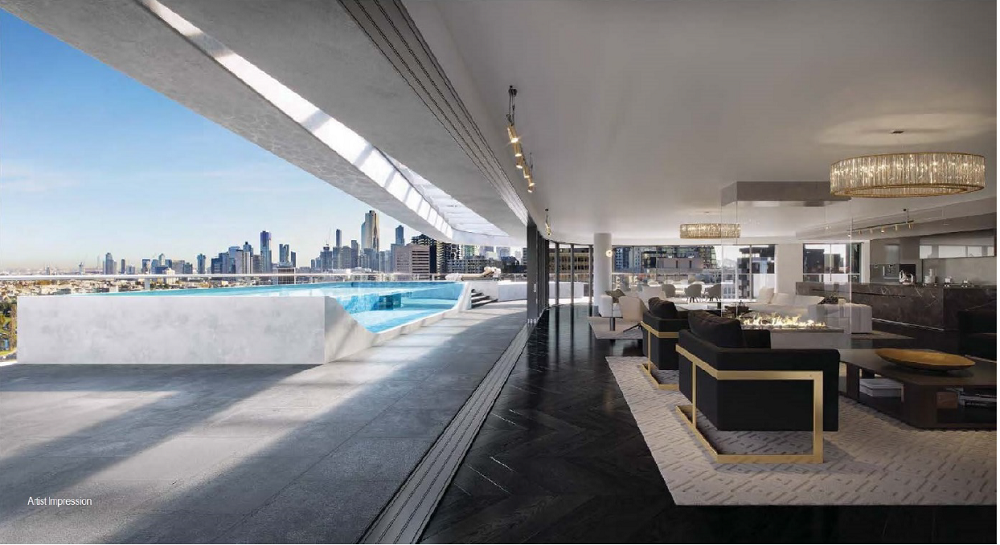- 05 Apr 2022
- 8 min read
- By Brett Heath, In-house Advocate, Carter Newell Lawyers
Developer liable for misleading and deceptive 'hero render' in off-the-plan sale
On 18 March 2022, the Federal Court of Australia delivered judgment in the matter of Ripani v Century Legend Pty Ltd.[1]
In that case, an "off-the-plan" contract of sale was rescinded by the Court on the grounds of the developer's misleading and deceptive conduct.
Facts
The case involved the purchase, by Mr and Mrs Ripani, of an apartment to be constructed at 20-21 Queens Road, Melbourne. The purchase of the apartment was undertaken "off the plan". Century Legend was the developer of the site. It proposed to construct a high-end, multi-storey apartment complex, to be known as "The Victoriana".
On 1 April 2017, the Ripanis signed a contract for the purchase of apartment 14.01 for $9.58 million, subject to a floor plan, satisfactory to them, being agreed.
Before entering into the contract, the Ripanis had been shown various promotional materials in respect of "The Victoriana", visited a display suite situated at the site, which contained a scale model of "The Victoriana" and, also, had viewed certain "artist's impressions" of the completed building.
The key image which the Ripanis viewed is depicted below and was an image which the Ripanis claim particularly caught their attention. It was an image of what apartment 14.01 was intended to look like, depicting the western aspect of that apartment and, in particular, a large "free-span opening between the inside of the living areas and the outdoor terrace". Significantly, there was "no differentiation between the interior floor level and the external terrace".

The Ripanis were impressed by this image, which depicted a space where "the indoor and outdoor areas flow seamlessly into each other when the doors are drawn back".
Unfortunately, apartment 14.01 could never have been built in such a manner and the developer knew that.
Before the Ripanis had entered into their contract to purchase apartment 14.01 on 1 April 2017, the developer had been informed by its architects that it would not be possible to construct apartment 14.01 flush with the outside threshold of the balcony, or in a manner which provided uninterrupted floor-to-ceiling glazing, because of height restrictions and structural requirements.
The architects themselves described the key image, described in the judgment as the "hero render", as misleading and recommended that the image be notated with the words "artist's impression". And so it was.
When the Ripanis found out that their apartment could not be constructed as depicted in the "hero render", they sought to terminate the contract. The developer resisted the proposed termination and sought to hold the Ripanis to the contract.
The issues
The central issue in the case was what reliance, if any, the Ripanis could have reasonably placed upon the so-called "hero render", notated with the words "artist's impression".
It is significant that, at the time the Ripanis entered into the contract, there was no building to inspect.
The Court considered the following questions, namely:
-
whether the "hero render" conveyed the representation alleged by the Ripanis, namely that the apartment would be constructed with a "free-span opening" and "seamless transition" between the internal living areas of the apartment and the terrace;
-
did the Ripanis rely upon any representation made to them in the so-called "hero render"; and
-
would the Ripanis have entered into the contract to purchase the apartment, had they not believed it would be constructed in accordance with the image which they had seen?
The Ripanis won every aspect of the case.
The decision
It was held by the Court that the "hero render" conveyed, in substance, the representations alleged by the Ripanis.
As for the proposition that the developer was saved by notating the image with the words "artist's impression", the Court held that:
"The fact that the render is an artist's impression does not detract from the materiality of the image and the representations it conveys, for the very reason that, in the context of an off-the-plan sale, such renders are a proxy for an inspection. Objectively, it is surely understood by vendors and the purchasers that the render, albeit an 'artist's impression', is a medium by which the purchaser may gain an understanding of the salient design features of the yet-to-be-constructed apartment.
The advantage of imagery over language is that an image, whether or not an artist's impression, is capable of conveying meaning holistically. Accordingly, in my view, the words 'artist's impression' are incapable, either alone or in combination with the other disclaimers and exclusion clauses to which I will now refer, of curing the misleading character of the representations made by Century Legend."[2]
As to whether the Ripanis relied upon the "hero render" in entering into the contract, the Ripanis' evidence was that they considered it was a "given" that the apartment would have a large opening onto the terrace and that this was a key matter for them when deciding to enter into the contract. Allied to this, was the finding that the Ripanis would not have entered into the contract had they known that the apartment could not have been constructed in the manner depicted.
The Court referred to statements made by Mr Ripani to the developer's sales agent, Mr Tran, namely that Mr Ripani said to Mr Tran, after having looked at the "hero render", that "look, you know, I'm after something like that".
The Court held that "had the Ripanis been told that the apartment would, or could, not be constructed to the design depicted in the render, they would not have contracted to purchase it".[3]
The exposure of the sales agent
The sales agent representing the developer was not sued or held to be accountable for the developer's misleading and deceptive conduct.
The Court held that the agent, who communicated the misleading and deceptive representations to the Ripanis, was "plainly the agent of Century Legend and acting within the scope of his actual or apparent authority in making those representations ... Mr Tran was merely a conduit for the representations as he was unaware at the time he made those representations that the free-span opening could not be constructed and believed what he said to the Ripanis to be true".[4]
Effect of disclaimers
The case is also significant, insofar as it contains a consideration of the disclaimer relied upon by the developer. The Court held that the disclaimer did not save the developer from the finding of having engaged in misleading and deceptive conduct.
The disclaimer was in the following terms:
"While all reasonable care has been taken in the preparation of this brochure and the particulars contained herein, it is intended to be a visual aid and does not necessarily depict the finished state of the property or object shown. No liability whatsoever is accepted for any direct or indirect loss, or consequential loss or damage arising in any way out of any reliance upon this brochure. Purchasers must rely upon their own enquiries and inspections. Furniture is not included with the property. Dimension and specifics are subject to change without notice. Illustrations and photographs are for presentation purposes and are to be regarded as indicative only. This brochure does not form part of, and is not, an offer or a contract of sale."
It was noted by the Court that the disclaimer:
-
appeared at page 96 of the brochure;
-
was given no prominence at all in the marketing materials;
-
appeared in smaller font than most of the other writing within the brochure; and
-
was barely legible against a dark background.
The Court agreed with the description accorded to the disclaimer by the Ripanis' counsel as having been "hidden" and concluded that the disclaimer was "inutile in the circumstances of the present case, particularly when compared to the indicative depiction of what the Ripanis were led to believe they may expect, as conveyed by the render".[5]
Disposition
The Court ordered that the $9.58 million contract be revoked and also awarded the Ripanis damages of $380,000, referable to the decrease in the value of the apartment.
After delivery of the judgment, the developer lodged an appeal and sought an order from the Court, preventing the Ripanis from retrieving their $950,000 bank guarantee - which was their deposit - until the appeal is resolved.
Purchasers of off-the-plan properties, developers and their agents, will await with keen interest the outcome of the appeal.
In the meantime, it is salutary to note that the agent in this case was not responsible for the developer's misleading and deceptive conduct because he was not aware of what the developer knew, namely that, what was being promoted could not be built. The position would have been very different if the agent had also been informed by the architect that the apartment could not be constructed as depicted in the "hero render".
References
[1] [2022] FCA 242.
[2] See paragraph 66 of the judgment.
[3] See paragraph 21 of the judgment.
[4] See paragraph 23 of the judgment.
[5] See paragraph 72 of the judgment.
You may also like
View All Articles
View All Articles


Start your Real Estate Career
Need help? 1300 697 347 or contact us




